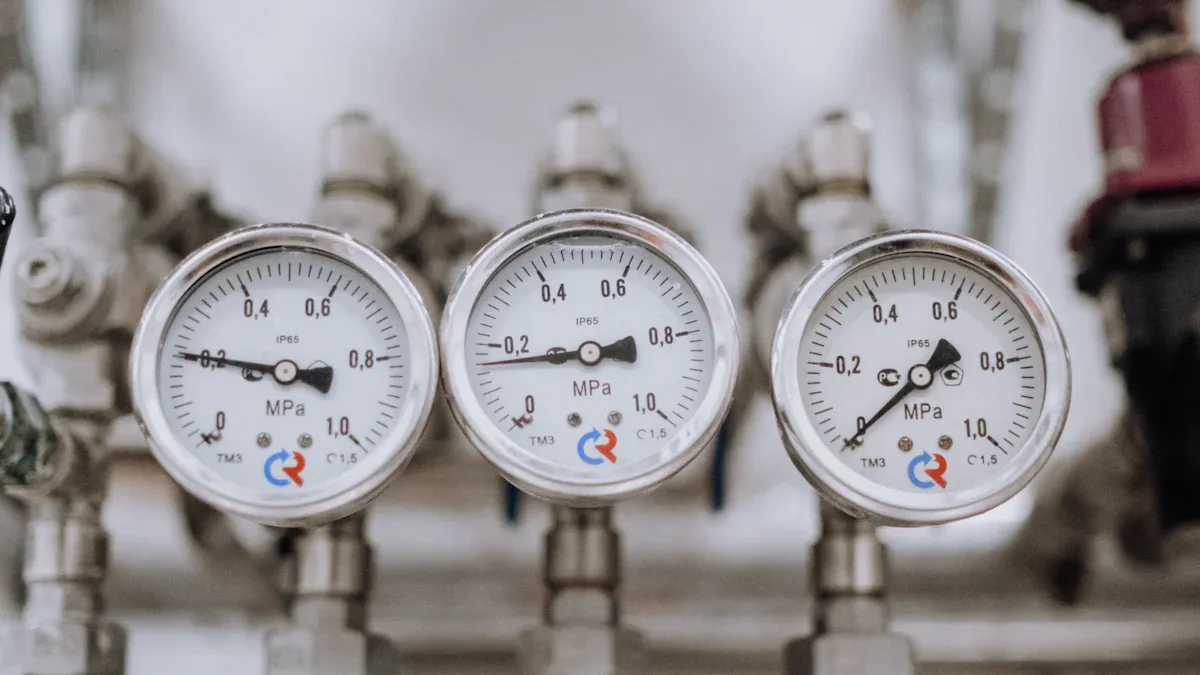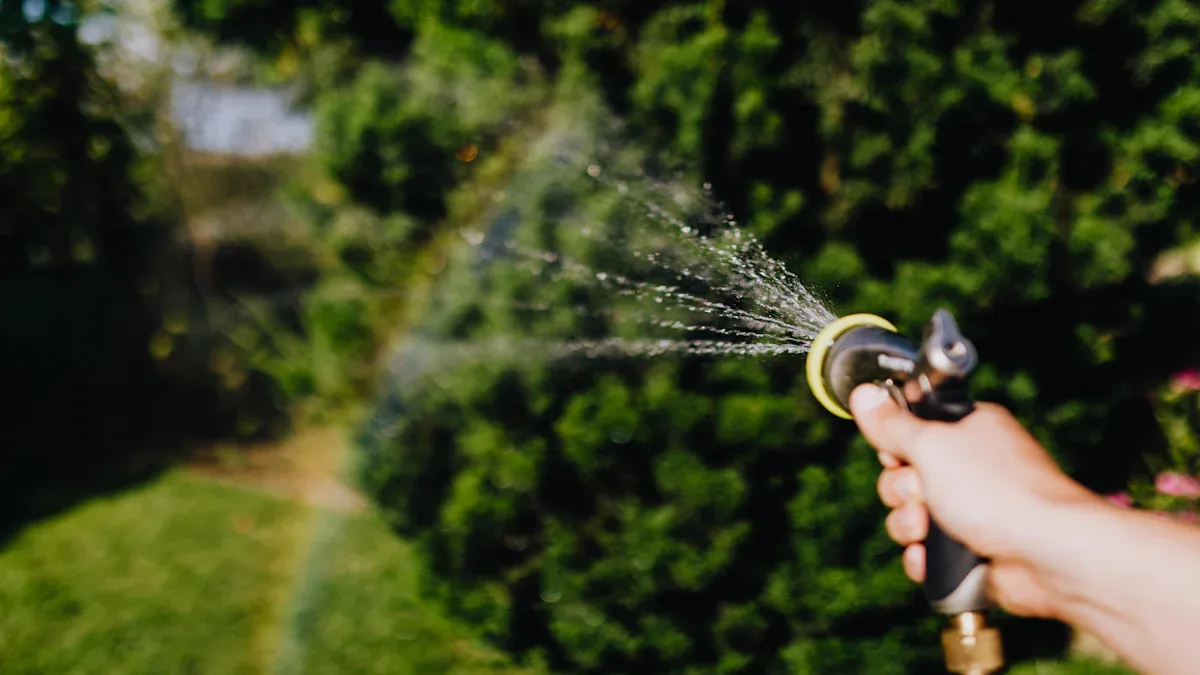
Maintaining jet spray nozzles with control valves is crucial for optimal performance. Neglecting maintenance can lead to common issues such as:
- Dripping from the nozzle
- Clogging that disrupts water flow
- Reduced performance during operation
These problems can affect the efficiency of devices like the Fire Jet Spray Nozzle and Full Cone Jet Spray Nozzles. Additionally, ensuring proper care of the Quick Release Jet Spray Nozzle is essential for seamless operation. Regular upkeep guarantees longevity and reliability in various applications.
Regular Cleaning and Inspection of Jet Spray Nozzles with Control Valves
Maintaining the cleanliness of jet spray nozzles with control valves is essential for ensuring optimal performance. Regular cleaning and inspection help prevent issues such as clogging and uneven spray patterns.
Cleaning Frequency
Manufacturers recommend cleaning jet spray nozzles with control valves after each use. This practice ensures that the nozzles function effectively and helps extend their lifespan. Regular cleaning can prevent the buildup of debris and mineral deposits, which can lead to decreased efficiency. Here are some key benefits of frequent cleaning:
- Extended Lifespan: Regular cleaning and maintenance are crucial for extending the lifespan of jet spray nozzles.
- Improved Efficiency: Clogged or worn-out nozzles can cause uneven spray patterns and decreased efficiency.
- Optimal Performance: Consistent maintenance practices can mitigate these issues, ensuring optimal performance.
Cleaning Techniques
Effective cleaning techniques can significantly enhance the performance of jet spray nozzles with control valves. Here are some recommended methods for removing mineral deposits and debris:
- Tap The Nozzle: Lightly tap the nozzle on a hard surface to dislodge debris.
- Soak in Vinegar: Use white vinegar to dissolve mineral deposits by soaking the nozzle for 45-60 minutes.
- Use CLR Solution: Soak the nozzle in a mixture of CLR and warm water for 1 hour to remove stubborn buildup.
- Ultrasonic Cleaning: Utilize ultrasonic cleaners to dislodge grime from intricate nozzle crevices.
- Scale Remover Pouches: Use citric acid pouches in warm water to eliminate scale deposits over time.
- Replace Nozzle Filter: Clean or replace clogged filters to ensure optimal water flow.
Inspection Checklist
Regular inspections of jet spray nozzles with control valves are vital for identifying potential issues before they escalate. Here is a checklist to guide the inspection process:
- Visual Inspection: Check for any visible signs of wear or damage on the nozzle and control valve.
- Check for Clogs: Ensure that there are no blockages in the nozzle or filter.
- Test Spray Pattern: Observe the spray pattern to confirm it is even and consistent.
- Inspect Control Valve Functionality: Ensure the control valve operates smoothly without leaks.
- Look for Mineral Buildup: Inspect for any mineral deposits that may affect performance.
By following these cleaning and inspection guidelines, users can maintain the functionality and longevity of their jet spray nozzles with control valves.
Proper Operation and Preventive Maintenance for Jet Spray Nozzles

Proper operation and preventive maintenance are essential for maximizing the efficiency of jet spray nozzles with control valves. Adhering to specific operating guidelines can significantly enhance performance and longevity.
Operating Guidelines
To ensure optimal performance, operators should follow these guidelines:
- Use nozzles rated at pressures of 50 or 75 PSI. This range minimizes nozzle reaction while providing sufficient water supply for firefighting.
- Avoid sudden changes in pressure to prevent damage to the nozzle and control valve.
- Maintain a steady flow rate to ensure even spray patterns.
Preventive Maintenance Schedule
Establishing a preventive maintenance schedule helps identify potential issues early. Operators should consider the following:
- Monthly Inspections: Check for wear and tear on nozzles and control valves.
- Quarterly Cleaning: Perform thorough cleaning to remove mineral deposits and debris.
- Annual Overhaul: Conduct a complete inspection and replace any worn components.
Importance of Control Valve Adjustment
Control valve adjustment plays a crucial role in the performance of jet spray nozzles. Properly adjusted valves ensure:
- Consistent water flow, preventing clogging by debris.
- Optimal spray patterns, which enhance firefighting effectiveness.
- Reduced wear on springs, maintaining the nozzle’s performance over time.
Neglecting these adjustments can lead to issues such as uneven spray patterns, increased maintenance costs, and reduced flow rates. Regular attention to control valve settings can significantly improve the efficiency of jet spray nozzles with control valves.
Troubleshooting Common Issues with Jet Spray Nozzles
Jet spray nozzles with control valves can encounter various issues that affect their performance. Understanding how to troubleshoot these problems is essential for maintaining efficiency and reliability.
Identifying Dripping Problems
Dripping from jet spray nozzles can lead to significant water waste and reduced effectiveness. To identify the root causes of dripping, consider the following factors:
- Pressure Decay: If the pressure in the nozzle circuit does not drop quickly enough, it can lead to dripping.
- Internal Check Valve Malfunctions: A malfunctioning internal check valve may remain open, causing dripping even when pressure is adequate.
- Wear and Damage: Inspect the spray nozzle for any signs of wear or damage. A damaged orifice can lead to dripping, and changes in the spray pattern may indicate underlying issues.
To eliminate dripping, operators can install in-line check valves. These devices allow water to flow in one direction, preventing backflow and effectively eliminating dripping.
Resolving Clogging Issues
Clogging is a common problem that can hinder the performance of jet spray nozzles. To resolve clogging issues, follow these effective solutions:
- Use Solvents: Create a cleaning solution according to the instructions, soak the nozzle, and rinse it clean.
- Utilize Nozzle Cleaning Tools: Employ tools with attachments like brushes and picks to remove grime effectively.
- Soaking Method: Place the nozzle in a cleaning solution for at least 45 minutes, then use a soft brush to remove debris.
Additionally, consider implementing preventive measures to reduce clogging risks:
- Use Large Free Passage Nozzles: These nozzles minimize clogging by allowing larger particles to pass through.
- Install Strainers: Strainers filter out particles before they reach the nozzle, reducing the risk of clogging.
- Heat Viscous Fluids: Heating fluids can reduce thickness, minimizing blockages.
- Use Self-Cleaning Nozzles: These nozzles automatically clear blockages, reducing the need for manual cleaning.
- Implement Brush-Type Headers: These maintain nozzle efficiency and help reduce clogging.
Water quality significantly impacts clogging frequency. Regular maintenance, including cleaning of nozzles, is essential to prevent clogging. Routine water quality testing can help address potential clogging issues proactively.
Performance Optimization Tips
Optimizing the performance of jet spray nozzles with control valves can lead to measurable improvements. Consider the following tips for enhancing efficiency:
- Use the Right Nozzles: Ensure that the selected nozzles are appropriate for the application to avoid wasting materials and money.
- Upgrade to Newer Versions: Evaluate options for upgrading to newer nozzle models that offer better efficiency and longer wear life.
- Automate Spray Control: Implementing automation can enhance precision and efficiency in spray applications.
- Establish a Routine Maintenance Program: Regular inspections and maintenance can prolong nozzle life and reduce costs.
- Inspect and Maintain Nozzles Regularly: Identifying wear early can extend the service life of the nozzles.
By following these performance optimization tips, operators can achieve significant improvements in spray patterns and overall efficiency. The table below summarizes the measurable benefits of optimizing jet spray nozzles:
| Improvement Type | Description |
|---|---|
| Increased Efficiency | Optimize spray patterns and flow rates to reduce waste and enhance productivity. |
| Cost Savings | Minimize resource usage and maintenance costs by ensuring your system is running efficiently. |
| Enhanced Quality | Achieve consistent and high-quality results with precise spray control. |
| Environmental Impact | Reduce your environmental footprint by optimizing resource consumption and minimizing waste. |
Implementing these strategies will not only enhance the performance of jet spray nozzles but also contribute to overall operational efficiency.
Safe Storage Practices for Jet Spray Nozzles with Control Valves
Proper storage of jet spray nozzles with control valves is essential for maintaining their functionality and longevity. Following specific steps can ensure that these components remain in excellent condition during periods of inactivity.
Preparing for Storage
Before storing jet spray nozzles, operators should take the following steps:
- Ensure all pesticides are used up at the end of an application. Do not leave product in the tank overnight.
- Perform a triple-rinse of the system to eliminate any residual chemicals.
- Remove, inspect, and clean the suction, in-line, and filter screens, replacing them if necessary.
- Clean the nozzle strainers and nozzle tips thoroughly.
- Refill the tank with clean water and a recommended detergent, circulating the solution for at least 5 minutes.
- Drain the sprayer through the plumbing system.
- Repeat the cleaning process.
- For winterizing, circulate a 50% solution of water and automotive antifreeze with rust inhibitor through the lines for 5 minutes and drain it.
- Leave the valves open and the tank lid loose to allow for air circulation.
Ideal Storage Conditions
Store jet spray nozzles in a cool, dry place. Avoid exposure to extreme temperatures and direct sunlight, which can degrade materials. A climate-controlled environment helps prevent damage from humidity and temperature fluctuations.
Seasonal Maintenance Considerations
Regular maintenance throughout the year is crucial. Operators should:
- Clean and inspect nozzles to prevent debris buildup that can affect flow rates.
- Evaluate nozzle performance by running the sprayer with water before the season starts.
- Ensure proper alignment of nozzles to maintain optimal spray patterns.
- Clean the machine’s plumbing to avoid chemical buildup and cross-contamination.
- Regularly check and clean strainers to prevent particulate from entering the system.
- Inspect hoses for wear and secure any that are sagging or kinked.
- Recalibrate the flowmeter to ensure accurate application rates.
By following these safe storage practices, operators can enhance the performance and lifespan of jet spray nozzles with control valves.
Regular maintenance of jet spray nozzles with control valves is vital for optimal performance and longevity. Implementing consistent cleaning and inspection practices prevents clogs and wear, ensuring reliable operation.
Key Benefits of Regular Maintenance:
- Extends the lifespan of various nozzle types.
- Identifies wear before it affects performance.
- Reduces downtime and improves application quality.
By following the tips outlined in this blog, operators can enhance the efficiency and durability of their equipment, ultimately leading to significant long-term savings.
| Aspect of Cost Savings | Description |
|---|---|
| Prevention of Inefficiencies | Regular maintenance prevents inefficiencies that can lead to increased operational costs. |
| Reduced Replacement Frequency | Keeping nozzles in good condition minimizes the need for replacements, saving on material costs. |
| Lower Energy and Resource Usage | Well-maintained nozzles operate more efficiently, reducing energy and resource consumption. |
| Prevention of Equipment Failure | Early identification of issues prevents costly repairs and unexpected downtime. |
| Extended Life of Nozzles | Regular maintenance extends the lifespan of nozzles, leading to long-term savings. |
Future trends indicate a shift towards high-tech valves with automated control and remote monitoring, enhancing operational efficiency. Embracing these advancements will further improve the reliability of jet spray nozzles.
FAQ
What causes clogging in jet spray nozzles?
Clogging often results from debris, mineral buildup, or improper water quality. Regular cleaning and maintenance can help prevent these issues.
How often should I inspect my jet spray nozzles?
Inspect jet spray nozzles monthly to identify wear and tear. Regular inspections ensure optimal performance and longevity.
Can I use any cleaning solution for my nozzles?
Use gentle cleaning solutions like vinegar or CLR. Avoid harsh chemicals that may damage the nozzle materials.
Post time: Sep-24-2025

